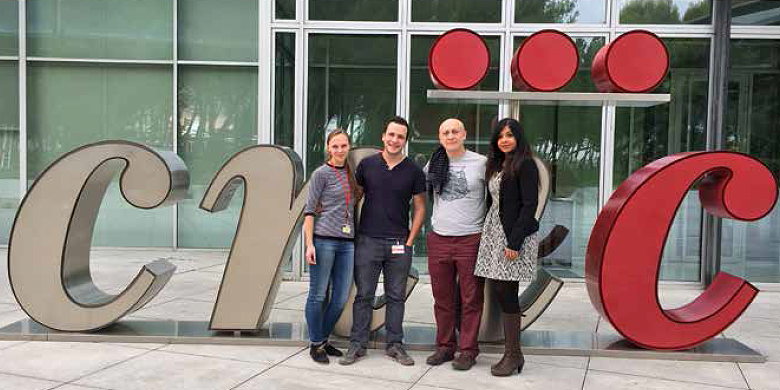Scanning of flowing blood by white blood cells can trigger cardiovascular injury
A subtype of the body’s main defensive agents—the white blood cells, or leukocytes—actively scan flowing blood for activated platelets,a process that can lead to many types of cardiovascular accident, including common events such as stroke
In an article published in the journal Science, CNIC researchers have reported that a subtype of the body’s main defensive agents—the white blood cells, or leukocytes—actively scan flowing blood for activated platelets, a process that can lead to many types of cardiovascular accident, including common events such as stroke.
If you ask your doctor to predict your chances of having a cardiovascular accident, for example a stroke or a heart attack, he or she would likely tell you that it’s not so easy to do because we still don’t know exactly how these events start. Your physician would also tell you that in spite of this there are certain markers that are highly predictive. One of these markers is the blood content of a specific type of leukocyte—the neutrophil. The other is the presence in flowing blood of activated platelets, which are responsible for coagulation and are the targets of such well-known drugs as aspirin. The question, from the biological point of view, is if the involvement of these two cell types is a mere coincidence or if they cooperate to initiate vascular injury.
The research was led by Dr. Andrés Hidalgo, group leader in the department of Atherosclerosis, Imaging and Epidemiology, and was achieved through partnerships with the CNIC Advanced Imaging Unit and groups at the Madrid Complutense University and others in Germany, the USA and Japan. Through this collaborative effort, the team discovered a surprising mechanism that explains how neutrophils and activated platelets cooperate to trigger cardiovascular events.
To investigate this phenomenon, the researchers used advanced microscopy techniques to look directly inside the blood vessels of living tissues. With these techniques the team was able to observe individual neutrophils and platelets during the inflammatory process. The first surprising finding was that the neutrophils that stick to the walls of the inflamed vessel extend a kind of cellular protrusion or arm into the vessel, and that this protrusion has a high concentration of a highly adhesive protein. The second unexpected observation is that some blood platelets stick to this protein on the neutrophil protrusion. Surprisingly, the only platelets that stick to this structure are those that are activated, the very kind that are a predictive marker of cardiovascular events. The final observation, and perhaps the most surprising, is that this adhesive protein is also able to send signals to the neutrophil to start an inflammatory response. It is this response that ultimately leads to vascular injury.
To investigate how this process underlies vascular accidents, the researchers induced stroke, septic shock or acute lung injury in mice in which the adhesive protein was absent or blocked. The team found that in all of cases the degree of damage in the tissues affected (brain, liver or lung) was significantly less severe than in unmodified or untreated animals.
The study explains old clinical observations, and has immediate implications for understanding the origin of many of the most prevalent types of cardiovascular events.
The study also illustrates how the latest technology helps scientists to discover the elegance of previously unknown biological processes, processes that can now be manipulated to prevent or treat diseases that have a devastating effect on human health.











